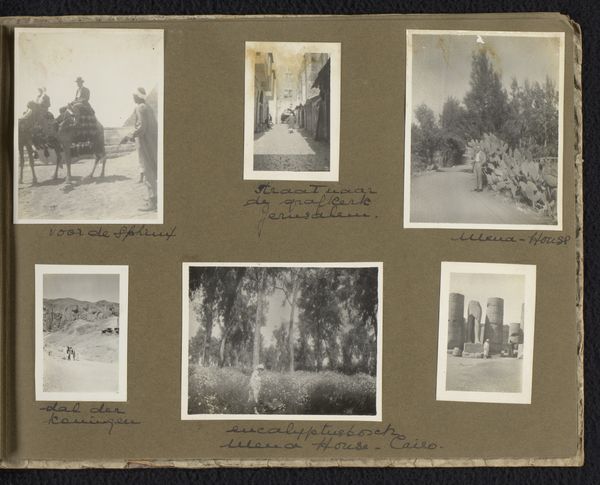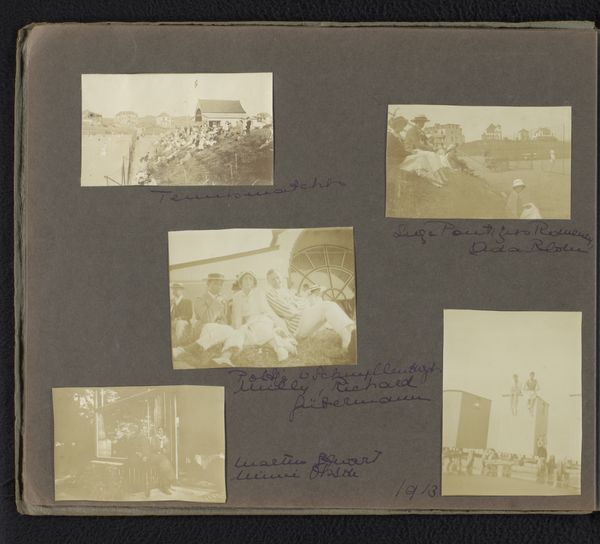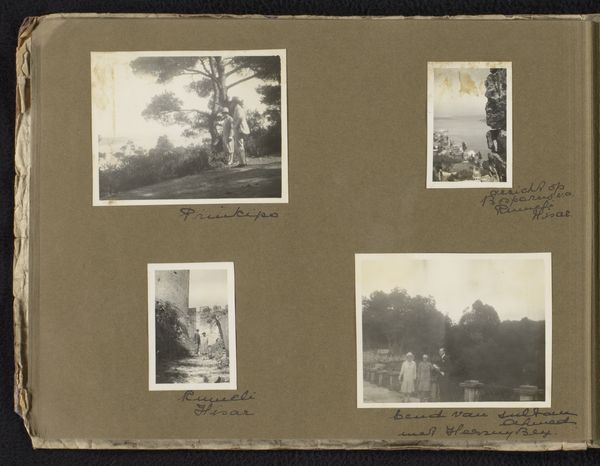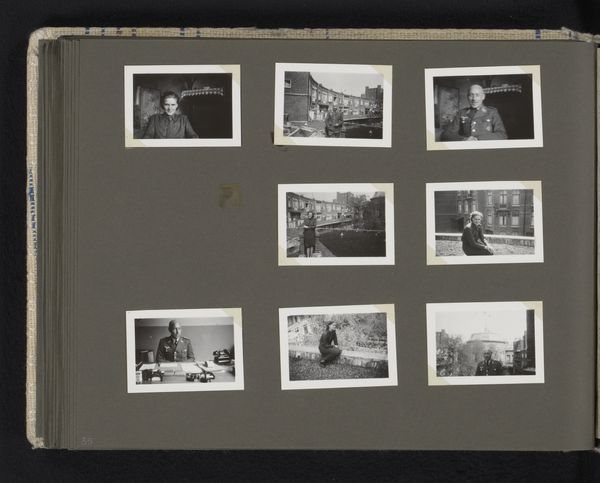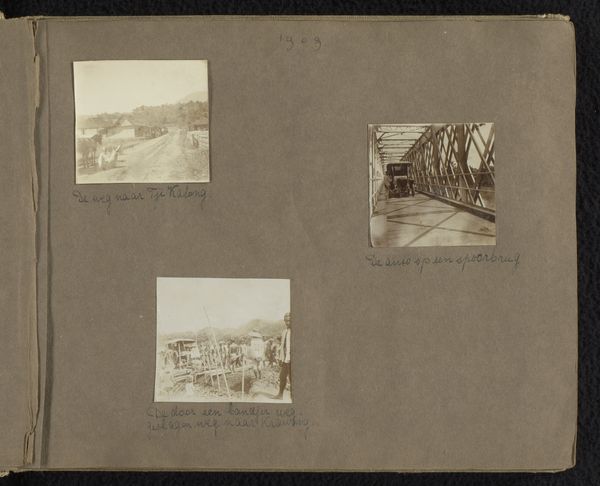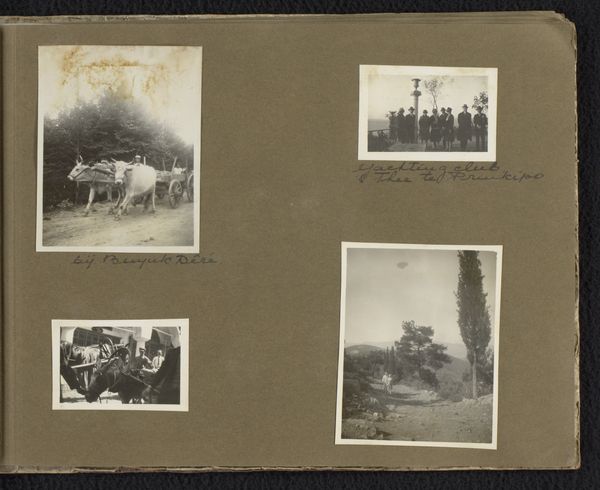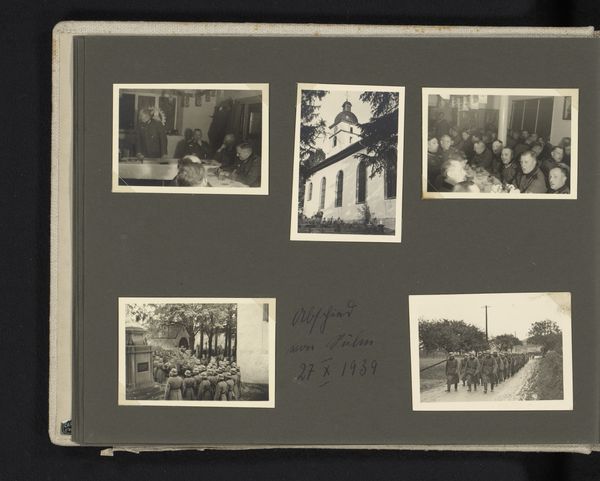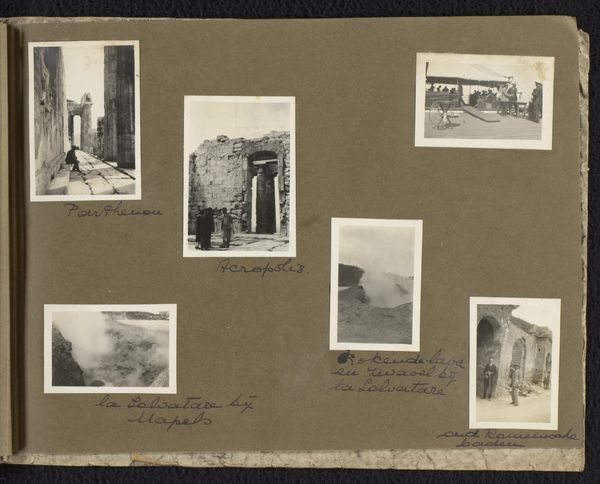
Gezin Furnée in Gouda, ter gelegenheid van de koperen bruiloft van Loentje en Frank Possibly 1930 - 1931
0:00
0:00
photography, albumen-print
#
portrait
#
aged paper
#
toned paper
#
homemade paper
#
pale palette
#
muted colour palette
#
ink paper printed
#
sketch book
#
landscape
#
white palette
#
photography
#
personal sketchbook
#
visual diary
#
cityscape
#
modernism
#
albumen-print
Dimensions: height 260 mm, width 325 mm
Copyright: Rijks Museum: Open Domain
Curator: Here we have a photographic album page titled "Gezin Furnée in Gouda, ter gelegenheid van de koperen bruiloft van Loentje en Frank," likely from 1930 or 1931, showcasing albumen prints. What are your initial impressions? Editor: It strikes me as a collection imbued with the tangible marks of its making— the pale palette, the almost ghostly figures, and the deliberate placement of these images onto a dark-toned homemade paper, almost as a visual diary of daily life. Curator: I agree; each print’s composition, its lines and geometric relationships, carries significance. Look at how the urban architecture in the top row contrasts with the landscapes and portraiture below. Editor: Yes, but I'm particularly drawn to considering the materiality of these albumen prints. It speaks to a particular social context where photographic portraiture was more directly a constructed labor— involving craftsmanship to yield durable likeness and affirm class identity. Curator: That's certainly one valid interpretation. But what intrigues me is the intentional placement. These groupings encourage comparative looking. Notice the architectural pictures on top all highlight the passageways: a portal or liminal zone that suggests transition and memory. Editor: You're speaking to its formal composition of this page within the album— I can also argue that the work of printing itself allows these kinds of social and family archives to come into existence through specific acts of printing. Curator: Interesting, yes, though I am drawn more to the overall symmetry and asymmetry of this page; each arrangement informs the viewing of the next through stark, almost surreal tonal shifts, particularly as seen across from left to right, from top to bottom. Editor: Precisely; these small, toned paper-mounted prints become more intimate, revealing domestic craft behind a couple’s public life on copper anniversary—almost giving access to intimate rituals beyond pure aesthetics, such as those family events in landscape formats which would allow for memory-making over time! Curator: Thank you; I never considered such aspects within those stark portrait settings depicted between architectural geometries until we analyzed production itself alongside aesthetics, here shown so gracefully together. Editor: My pleasure.
Comments
No comments
Be the first to comment and join the conversation on the ultimate creative platform.


